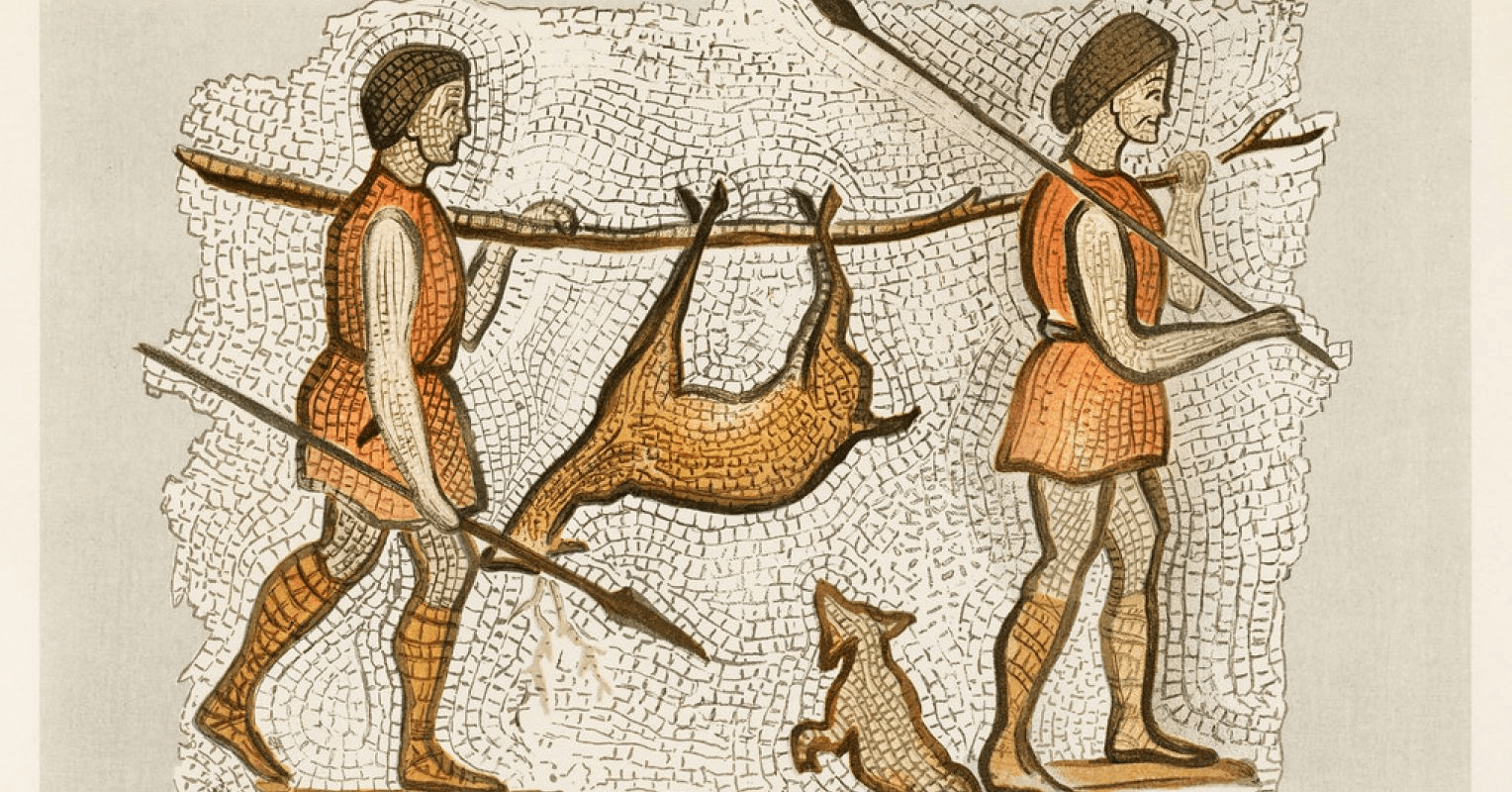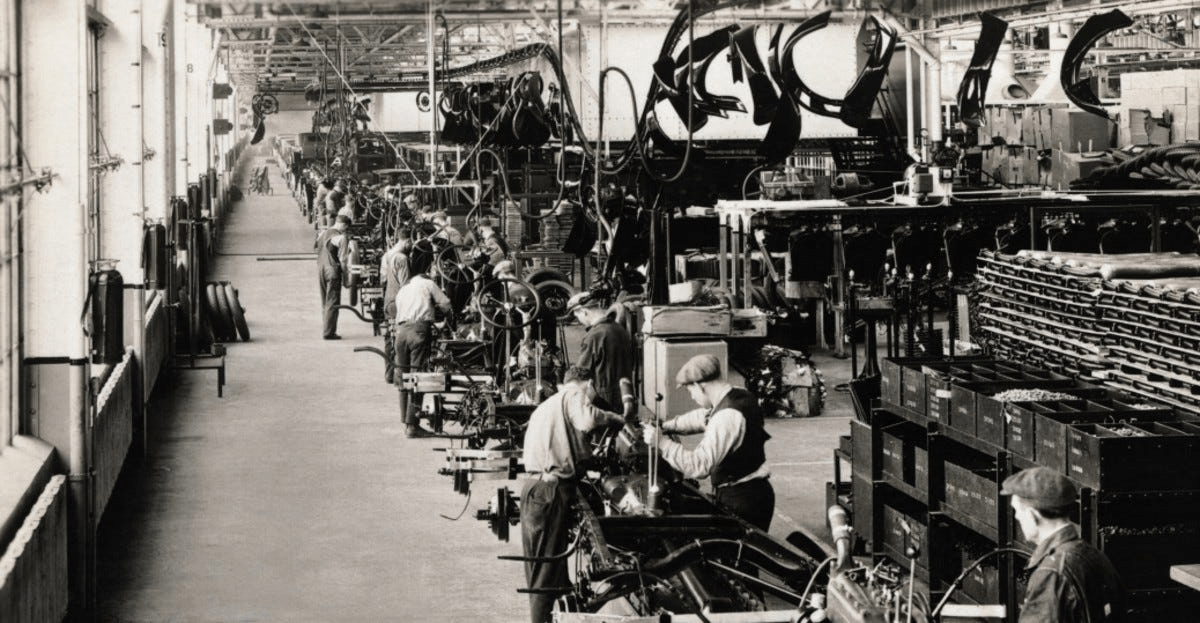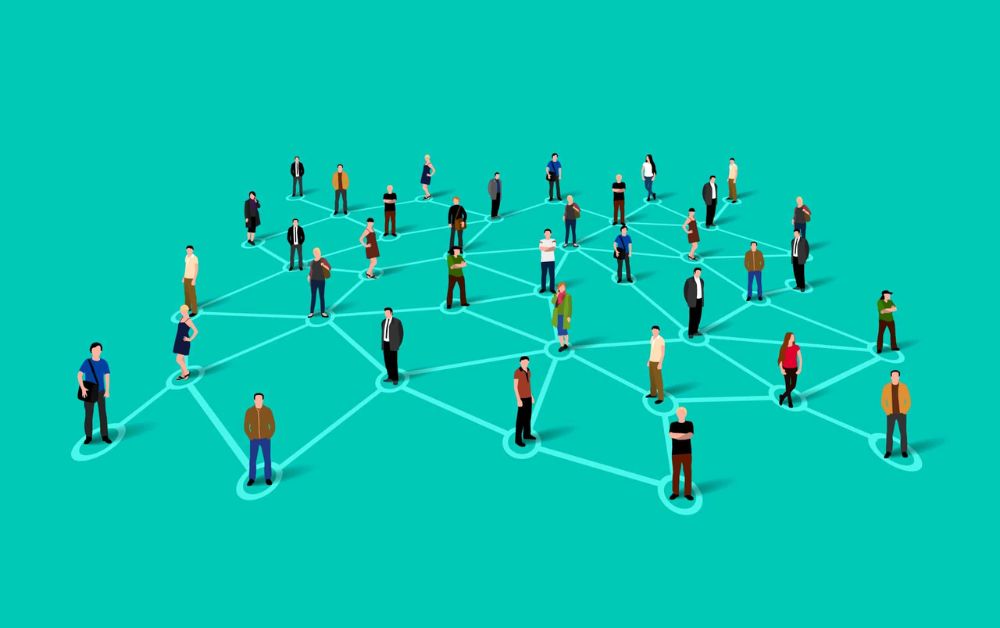Today’s insights are brought to you by my colleague and leadership thinker, Keith Coats.
Competitive Advantage – What matters most and how we got here:

Competitive advantage has always existed and understanding the evolution of what constitutes competitive advantage in today’s context, is important for any business. It may seem obvious and yet there are many companies who persist in playing by ‘old rules’ when it comes to their endeavour to create a competitive advantage for their service or product. A way to understand today’s competitive advantage – and for many it will strategically be ‘tomorrow’s competitive advantage’, is to go back to the future.
By tracing what constituted competitive advantage through a succession of economic eras, we will be able to see the evolution of what remains central to business success. This journey through time will build an appreciation for how each new era precipitates what we could call the ‘rules of the game’ in the quest to establish a competitive advantage.
The secret is in understanding these changes to the rules of the game and interpreting them in one’s own context and practice. This is not always easy. The inability to do this is a contributing factor in the fall from grace that has beset many companies that at one or other time might have appeared impregnable as they strode like a colossus across their particular industry.
What follows then is a sprint through 100,000 years of human history viewed through a lens of economic eras in which we unpick what constituted competitive advantage in each of the eras examined. Naturally, this represents a very generalised overview; nonetheless there are valuable insights to be gained for future success through undertaking such a journey.
The other golden threat to be aware of is that although what constitutes competitive advantage differs from era to era, there are important carry-through lessons to be learnt from the past as we navigate our present and future realities.
The Hunter Gatherer Economy:

If we estimate human history to span 100 000 years, then approximately 90% of this period would have been dominated by the ‘Hunter-Gatherer’ era. In this era a nomadic, tribal lifestyle would have been the norm. Experience was essential to both survival and the transfer of knowledge. It stands to reason then that the elders were the leaders within the tribe. Those whose stories stretched back the furthest were the leaders. Remembering was revered, as it was essential to survival.
In this era achieving a greater sense of focus than your competitors forged competitive advantage. By ‘focus’ it is meant the ability to hunt, ensure the tribe’s safety and act on vital knowledge.
In essence the ability to action or translate this ‘sense of focus’ secured a competitive advantage. In this economy leadership would have devolved to the strongest of the species. In the tribal context this meant that men would have exerted dominance when it came to leadership matters.
There are two important lessons for us today from this particular era: The tribal cohesion and loyalty that helped ensure survival and the importance of storytelling in the context of preserving and transferring fundamental values.
What is interesting is the resurgence in both these concepts – tribes and story, in the context of the modern company.
The disruptive shift that occurred which changed the rules of the game was the ability to harness animal power to plough – and of course the plough itself. One way to understand ‘disruptive shift’ is to tag it ‘technology’. This then emerges as a consistent lever in the transition from one era (economy) to the next. Technology is always the ‘game changer’ and is also a simplistic way to understand the respective transitions that we are exploring.
In reality, it is not this simple. We know that events – local and global, as well as other factors also impact on such transitions. However, for our purposes, we will concentrate purely on the major technologies that served as a catalyst to the rules of the game changing when it came to competitive advantage.
Summary of this Hunter-Gatherer Economy:
Competitive advantage: Focus
Leadership: The strong
Time: Historical
Disruptive shift: The plough, harnessing animal power
The Agrarian Economy:
It was approximately 10 000 years ago that agriculture emerged leading to a change in the way life was lived. The plough, the advent of animal husbandry and the invention of the water mill, all led to an increase in available energy. In essence muscle power was replaced by this ability to harness animal-power and nature.
The nomadic nature of tribal life gave way to permanent homesteads that combined both life and work. All contributed and children guaranteed a succession plan was in place.
In this context competitive advantage was forged by those who were able to extract more from their main asset – their land, than others. Those who understood the benefits of subsistence farming and were able to practice it, created for themselves a competitive advantage. ‘Sweating your assets’ it would seem is a phrase that is rooted deeply in the past, as this is exactly what it took to create a competitive advantage in the Agrarian economy.
Leadership in this context centred on those who owned the land. Owning land become the means whereby power was exercised and naturally birthed a supply and demand dynamism that underpins commercial trading to this day. The lesson for today from this era would be the need to work your assets and yet, whilst the ability to do that created a competitive advantage, technology was soon to once again ruin the party.
The disruptive shift that occurred was the introduction of the industrial revolution. The industrial revolution started in Britain around 1750.
Summary of the Agrarian Economy:
Competitive advantage: Working your main asset
Leadership: The landowners
Time: Cyclical
Disruptive shift: The steam engine, the printing press
The Industrial Economy:

Innovations such as the printing press and the steam engine were to revolutionise society and lead to rapid urbanisation and a redistribution of the population mass. Factories emerged and with this work became organised. This was the birth of modern day management as Fredrick Taylor and others proposed theories around how best to maximise efficiencies in the pursuit of profitability.
It is in this era that organisational hierarchies emerged and the logic that produced clichés such as, ‘If you can’t measure it, you can’t manage it’ and, ‘if it isn’t broken, don’t fix it’ was formed. A clear distinction between the bosses (management) and the workers emerged – or between the ‘white collar’ and ‘blue collar’ workers as it became known. Management provided the ‘head’ (the eyes, ears and brain) power and the workers the body – the muscle power.
Powerful and lasting political and economic ideologies grew out of such an environment – nationalism, socialism, communism, liberalism and capitalism all trace their roots back to this context. During the nineteenth century global markets started to evolve, something that was to gain momentum during the twentieth century, underpinned by mass production and ever-increasing efficiencies, especially in the area of transportation.
The shadow of the industrial era has cast a long shadow, one that still has many a contemporary company in its shade. Daniel Pink makes the telling point that our current management systems (which can be traced back to the Industrial era) are designed to bring about compliance. In doing that they are successful however, today, as we shall see later, it is not compliance that we need but rather engagement. This then is one compelling reason to be rethinking our standard management mind-sets and practice.
Achieving greater business efficiencies forged competitive advantage in the industrial economy. The irrepressible force to achieve such efficiencies is evidenced in the production line assembly system made famous by Henry Ford. Soon everybody was using such methodology and a significant and powerful shift took place in what had been the norm in the previous economic era – that of the Agrarian era.
In the Industrial economy leadership was transferred to those who were the factory owners, the educated. Access to education was limited and, in some cases, restricted – and those who were able to exploit the benefits of access to education became the leaders. The uneven distribution of global wealth accelerated and the dichotomy between wealth and poverty within society became ever more pronounced. Time shifted from the cyclical (in the Agrarian economy) to linear as a bright future beckoned through the never-ending wave of technological advances.
The disruptive shift that occurred happened in the 1960s with the arrival of technologies that elevated our ability to access and store information.
Summary of the Industrial Economy:
Competitive advantage: Business efficiencies
Leadership: The educated
Time: Linear
Disruptive shift: Information technologies
The Information Economy:
The early mark of the fourth economy was the emergence and / or dominance of companies such as Hewlett-Packard, IBM and Motorola. Knowledge overtakes capital in importance as capital shifts from being physical to intellectual or as Jensen phrases it, ‘It (capital) resides in our heads, not in bank accounts or in machines’. British management guru and author Charles Handy points out that at last, Marx and communism were proved right by the emergence of the Information economy.
In the same way that the Industrial economy ‘abolished’ manual labour replacing such with machines, so the Information economy has taken over much of the cerebral and sensory work done by humans. This of course has happened through the increasing use of computers and scanners to perform those functions once done by people. The Information economy has grown exponentially with the rapid and pervasive technological innovations that have occurred. Omnipresent telecommunications, 24/7 TV channels, personal computers and smartphones being the obvious examples.
In this economy, competitive advantage can no longer be found in ensuring greater business efficiencies. As with all the other economies, when the transition occurs, the old factor that secured a competitive advantage becomes a hygiene factor. It moves from being the distinguishing feature to merely a necessity in what constitutes competitive advantage. In the Information economy competitive advantage is found in the ability to extract relevant information from within and without the system – and use that information to create a strategic advantage. We call it ‘business intelligence’.
In this economy companies mine data – or pay others to do so on their behalf. This part of the equation is understood – the need to have access to data. However, having the data is not enough, one has to show it and use it is ways that people both understand and find helpful. Many large multinationals, in a world where business efficiency reigned supreme, created silos within their structures. These silos are often blighted in their ability to communicate with each other.
Now that the world has shifted to a more integrated context, this inability to rapidly share relevant information, leads to a distinct disadvantage – especially when the customer or consumer’s expectations are for speedy, integrated service or delivery. For a current example of this, think no further than many of the large banks.
In the Information economy time moves from linear to being open-ended. It becomes ‘real time’. Reality is portrayed live and events, even though separated by distance, become simultaneously experienced in a world that is increasingly connected. Leadership is centred on those who have access to the data and who display agility and nimbleness in the face of the insistent, rapid and ubiquitous change that has become the new norm.
An interesting footnote in tracing leadership throughout the respective economies is that this is the first economic era conducive to the role of women in leadership. This is not to say that there were no women leaders in the other eras but simply that the context did not support women in leadership positions and roles.
For example, in the Hunter-Gatherer era leadership would devolve to the physically strongest – men were stronger; in the Agrarian economy it would have been the land-owners – women were generally forbidden to own land or have the title deeds; in the Industrial economy leadership fell to the educated – women were prohibited from accessing tertiary educational institutes. In the Information economy, for the first time, women were not obviously prejudiced in their aspirations to formally occupy leadership roles and positions. It is little surprise then that in the corporate world, it was the information technology sector that led the way in appointing female CEOs.
The disruptive shift that is occurring is the rapid advance of social technologies that are changing the rules of the game in how we connect, collaborate and communicate.
Summary of the Information Economy:
Competitive advantage: the ability to extract and use information
Leadership: Those with access to information technologies
Time: Open-ended, reality
Disruptive shift: Social technologies
Where we are now: The Connection Economy.

The Information economy is giving way to the emergent ‘next economy’ that we in TomorrowToday have tagged the, ‘Connection economy’. The new economic era has also commonly been referred to as the ‘relationship economy’, the ‘experience economy’ and even the ‘dream society’ (Rolf Jensen). It really does not matter what descriptive title you ascribe to it – the point is that once again the rules of the game are shifting and with that, what constitutes competitive advantage.
It is a shift that is an extension of the use of technology to not merely extract business data but to be used for personal connection. It is the emergence of social technologies (Facebook, LinkedIn, Twitter etc.) that connect people and are used to initiate, develop and establish personal relationships. It sounds very ordered, logical – even contained, until viewed through a generational lens in the context of the work environment.
The Connection economy is being played out against the backdrop of a ‘changing of the guard’ within both the workforce and leadership domains within organisations. Essentially it is a clash between Boomers (who could at best be described as ‘digital immigrants’) and Gen X (‘digital natives’) and it is on the battleground of this generational ‘war’ where it is easiest to see the emergence of the Connection economy. The clash in values between Boomers and Gen X when it comes to life / work balance, work ethic, career development, change, teamwork and motivators (to name but a few), is pronounced. Technology – and specifically the use of social technologies, forms the cutting edge to this generational divide.
In the Connection economy, competitive advantage shifts to the ability to form meaningful connections or relationships. In the context of access to information, personal choice and competitive pricing, the question of ‘why buy your product or engage your service?’ becomes ever more narrow. The decisive criteria in that decision comes down to that of personal ‘connection’: I want to do business with you because I like you, trust you, I believe in your cause, your values – we have a relationship. It is that simple, it is that complicated.
Perhaps the most obvious arena in which to see and understand this shift is in what has been dubbed the ‘war for Talent’. The attraction and retention of ‘Talent’ (the next generation) is paramount to any organisation’s future. Talent has become big business and for all the activity and effort in this area, few are getting it right. Essentially, it is a connection issue. Attracting, retaining and engaging Talent is all about connecting with a group who for the most part look, think and act differently to those who have gone before – to those responsible for writing the existing ‘rules of business’ that are under such siege.
The Connection economy sees a shift toward meaningful relationships both inside and outside of your organisation. PR has to be tuned inwards. Social technology and a generation who know how to use it (in fact who cannot imagine life without it) is driving a different agenda around the why, how and what when it comes to connecting. In an economy where connection is essential, many IT policies appear archaic and require serious rethinking.
Leadership in the Connection economy will pass to those who understand the fundamental shift taking place and what that means for their own leadership thinking and practice. The term ‘authentic leadership’ is making its appearance with ever increasing frequency in leadership development programmes; emotional intelligence is gaining ground and the host of tools associated with how to measure and develop it (a trap of Industrial age thinking perhaps?). There is a growing appreciation for understanding leadership as a ‘character ethic’ rather than merely a ‘skill set’.
There is greater urgency in ensuring that ‘who we say we are’ as a company, is ‘who we really are’. It is an alignment between the corporate values and the corporate behaviour. It is a consistency being driven by a connected generation arriving at work unafraid to ask questions in this area – and unafraid to share their findings with their extensive networks.
Further evidence of the emergence of the Connection economy is the increasing emphasis being given to ‘social business’ – a term that would have been something of an oxymoron to an earlier generation! IBM is increasing using ‘social business’ as a leading mantra and smart companies understand the need to drive and support social business that is really nothing more than ‘internal connectivity’.
Welcome to the Connection economy! It is a context in which time is virtual and one which is forcing a serious rethink in areas such as organisational design and structure, strategy, leadership, marketing, PR, training and development.
Summary of the Connection Economy:
Competitive advantage: Authentic connection – inside and outside your business
Leadership: The emotionally intelligent
Time: Virtual
Disruptive shift: (?) A good question to be asking… watch this space and keep looking out the window!
The future has already happened, but it is unevenly distributed. There are places, many emerging economies, where a convergence of the economic eras spoken about is evident.
This is a framework that allows us to better understand contextual change, the disruptive drivers of that change and impact, specifically what constitutes competitive advantage. In a world of increasing paradox, frameworks are important in helping us understand the paradox (right-right situations) at play and making sense of what is often incorrectly engaged with as ‘right-wrong’ situations. Frameworks offer a simplistic understanding of complex developments or situations.
This particular framework whilst simple (in understanding evolving economic history) is helpful in getting to heart of understanding context and the ‘rules of the game’ concerning competitive advantage. In TomorrowToday we understand both the importance and limits of frameworks. Nonetheless we continually develop and use frameworks to achieve enhanced understanding and surface better questions. This is one such framework.
If the Connection economy framework leads to asking more intelligent questions of your business and people, then it has achieved something worthwhile.
The ability to transition from one economic era to the next is fundamental to continued and sustained business success. Few manage to achieve this yet, in a world of increasing complexity and ubiquitous and unrelenting change, the need for such is beyond debate. Smart leaders get this and understand the need to build adaptability and nimbleness into the very DNA of their organisation.
This is why we in TomorrowToday place such emphasis on the need for models such as adaptive leadership and invitational theory – and why we speak a great deal about the need to seriously rethink the way we do things!
Rolf Jensen’s The Dream Society was foundational in developing this framework. We applaud and recommend Jensen’s thinking and work and acknowledge his influence on our own thinking within TomorrowToday when it comes to this particular framework.
Keith Coats is a founding partner of TomorrowToday Global and leadership specialist. He is now based in Cape Town, South Africa having relocated from London towards the end of 2021. Keith works with blue chips companies and in multiple business school leadership programmes worldwide helping senior leaders prepare today for the challenges and threats of tomorrow…and sometimes, the ‘day after tomorrow’.
Recently Keith’s travel has included working throughout the UK, the USA, Saudi Arabia, Dubai, Abu Dhabi, Germany, Switzerland, Singapore, and of course, South Africa.


